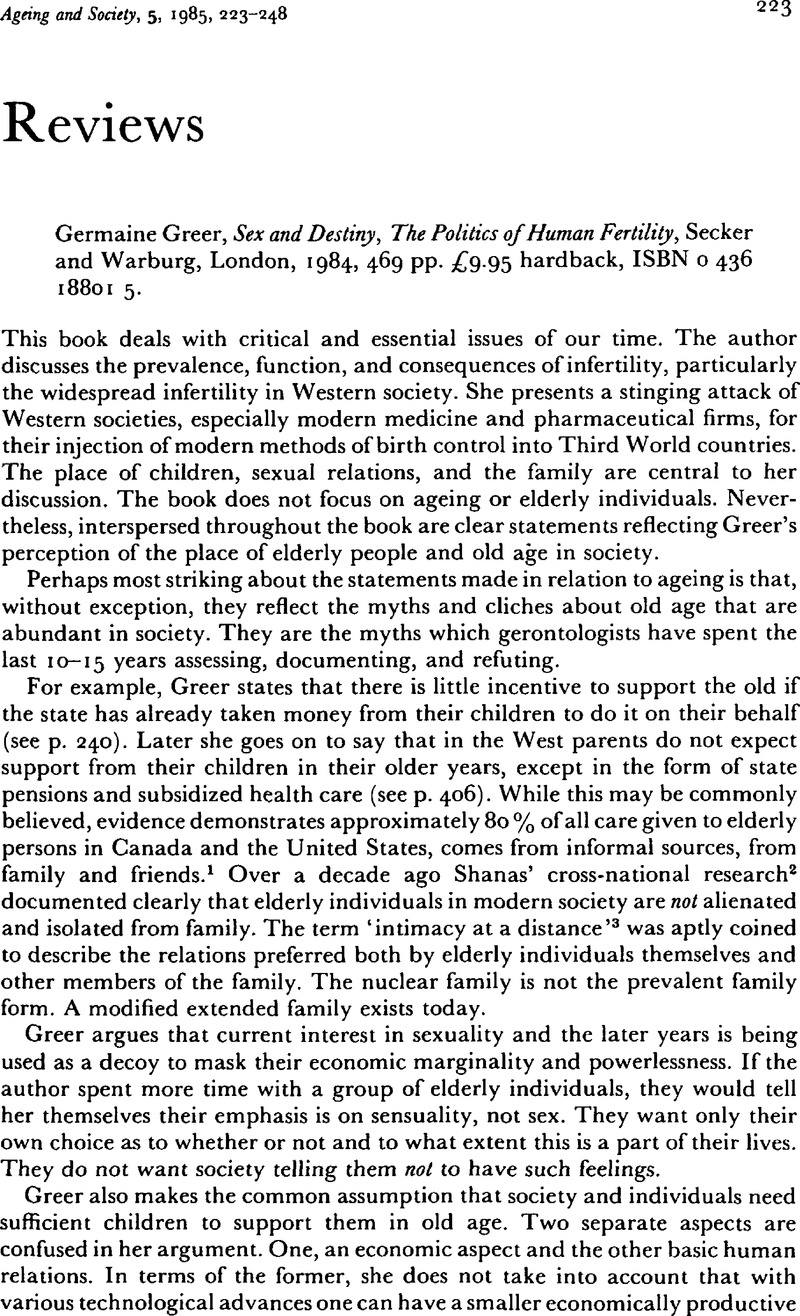Published online by Cambridge University Press: 14 November 2008

1 See for example:
Brody, E. M., ‘Innovative programs and services for elderly and family’, Testimony before the Select Committee on Aging. House of Representatives, 96th Congress, Washington, DC, 1980.Google Scholar
Chappell, N. L., ‘Social support and the receipt of home care services’. The Geronlologist, forthcoming, 1985.CrossRefGoogle ScholarPubMed
Chappell, N. L. and Havens, B. ‘Who helps the elderly person: a discussion of informal and formal care’, in Peterson, W. and Quadragno, J. (eds.), Social Bonds in Later Life. Beverly Hills, CA, Sage Publications, forthcoming, 1985.Google Scholar
2 Shanas, E. ‘Social myth as hypothesis: the case of the family retirement of old people’. The Geronlologist, 19 (1979 a), 3–9.CrossRefGoogle ScholarShanas, E., ‘The family as a support system in old age’. The Gerontologist, 19 (1979 b), 169–174.CrossRefGoogle ScholarPubMed
3 Rosenmayr, L., ‘The many faces of the family’. Paper presented at a meeting of the International Association of Gerontology, Jerusalem, Israel, 1975.Google Scholar
4 Kaplan, E., SIBA Clinical Symposium, 35, 4 (1983).Google ScholarAvioli, L. (ed.) The Osteoporotic Syndrome. New York, Grune & Stratton, 1983.Google Scholar
5 See Chappell, N. L., Strain, L. A. and Blandford, A. A., Continuity of Care in an Ageing Society: Issues and Trends. Toronto, Holt, Rinehart & Winston, forthcoming, 1985.Google Scholar